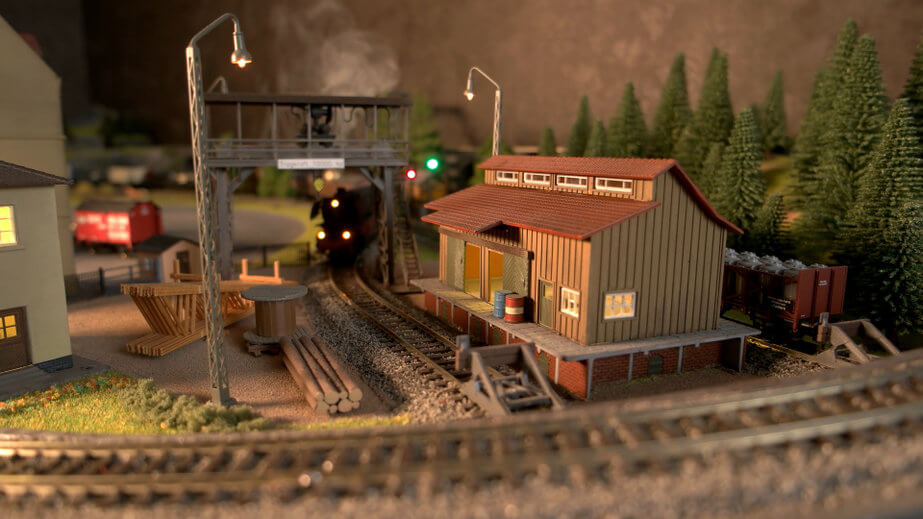History and Culture
Are N Scale Model Railroads the Same as Micro-Scale? Understanding Miniature Railways for Hobbyists

Decoding the World of Miniature Railways
When we embark on the intricate journey of model railroading, one of the first things we encounter is the diversity of scales and gauges. Among these, **N scale** and **micro-scale** are terms that often come up in the community. They are crucial for hobbyists who dedicate time and effort to creating detailed and realistic miniature worlds. But what do these terms mean, and are they referring to the same concept in the realm of model trains?
Understanding Scale in Model Railroading
In model railroading, the term ‘scale’ refers to the proportional size of the model train in comparison to its real-life counterpart. Scale is the foundation upon which hobbyists build their miniature railways, ensuring that every element from the locomotives to the tiny figures maintains a consistent size ratio.
Breaking Down N Scale
**N scale** is a popular model train scale, with a ratio of 1:160 in the United States. This means that one inch on an N scale model equates to 160 inches in the real world. This scale strikes a balance between detail and space-saving, making it a favored choice for those who wish to create expansive track layouts within limited areas.
Micro-Scale: A Matter of Precision
**Micro-scale** model railroads, on the other hand, can sometimes be a term used interchangeably with N scale, particularly when referring to the smaller end of the spectrum. However, it’s important to note that micro-scale can also refer to even smaller scales, such as Z scale (1:220) or T scale (1:450), which push the boundaries of miniaturization in the hobby.
Comparing N Scale and Micro-Scale
So, are N scale and micro-scale the same? While they may overlap in casual conversation, they are not identical. N scale is a specific scale, while micro-scale encompasses a category of scales that are smaller than the more commonly known ones like HO (1:87) or O (1:48).
Scale Modeling: A Delicate Art
**Scale modeling** is an art that requires attention to detail and precision. It is the process by which hobbyists create models that accurately reflect the scale they are working in. Whether choosing N scale or another micro-scale, the art of scale modeling remains the same: it’s about replicating the real world in miniature form with as much accuracy as possible.
Choosing the Right Track Layout
The **track layout** is the physical manifestation of a hobbyist’s vision. It includes the tracks, scenery, and structures that make up the model railroad. N scale allows for complex layouts in smaller spaces, while other micro-scales might offer different advantages, such as the ability to fit a layout into a briefcase or on a desktop.
Embracing the Hobbyist Spirit
For **hobbyists**, the choice between N scale and other micro-scales often comes down to personal preference and the specific goals of their projects. Some may prefer the greater detail that can be achieved with N scale, while others might be drawn to the challenge of working with even smaller micro-scales.
Practical Applications and Real-World Examples
Real-world examples of N scale model railroads can be found in numerous hobbyist circles and exhibitions. These meticulously crafted models often feature historical themes, replicas of existing train lines, or entirely fictional landscapes. The practical application of choosing N scale over other micro-scales becomes evident when hobbyists share their creations, showcasing the potential for complexity and beauty within a compact space.
Conclusion: A World of Possibilities
In conclusion, while N scale and micro-scale model railroads share similarities, they are distinct concepts within the hobby of model railroading. Each offers a unique set of possibilities and challenges for the hobbyist, and the choice between them depends on individual preference, project scope, and the desire for detail or compactness. As we continue to build and enjoy these miniature marvels, the distinction between scales remains an essential consideration in the pursuit of scale modeling excellence.

Hi there! I’m Timothy Robinson, a 51-year-old male living in Denver, CO, US. As a News Editor for NewsRoomFeed.com, I bring you the latest and most accurate news stories daily. With my degree from UNT, I’ve honed my skills in journalism and storytelling to deliver informative and engaging content to our readers.
But I’m not just all work and no play. Outside of my career, I have diverse interests and hobbies that bring joy and balance to my life. One of my passions is building custom model trains. I spend countless hours in my garage, immersing myself in the creative process of assembling and detailing the intricate train engines. I also construct scale tracks that accurately represent real-world railway systems, complete with miniatures of American Home Town railroad depots and authentic-looking woodland scenery.
You’ll often find me exploring the breathtaking mountains and trails around Denver when I’m not in my garage. Hiking is my way of finding solace in the great outdoors, where I can embrace nature’s serenity and tranquility. From conquering challenging summits to enjoying a leisurely stroll, hiking provides me with the perfect blend of physical activity and mental rejuvenation.
But above all, I value spending quality time with my family. We bond over game nights, embark on exciting road trips, and savor delicious home-cooked meals together. These moments of connection and love create cherished memories that will last a lifetime.
Through my passion for model trains, love for hiking, and devotion to family, I lead a well-rounded and fulfilling life outside my role as a dedicated News Editor. Stay tuned for more as I explore the news world and share my adventures.





